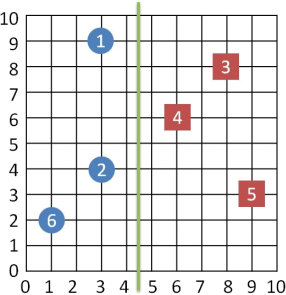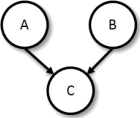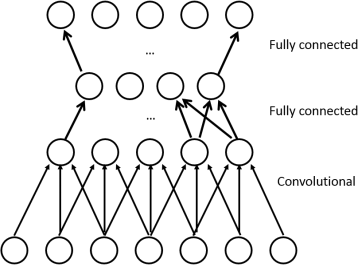COMP90051 Statistical Machine Learning Practice Exam Semester 1, 2023
Hello, dear friend, you can consult us at any time if you have any questions, add WeChat: daixieit
COMP90051 Statistical Machine Learning
Practice Exam
Semester 1, 2023
Total marks: 120 in real exam based on more questions; 90 in this practice exam
Students must attempt all questions
Section A: Short Answer Questions [25 marks]
Answer each of the questions in this section as briefly as possible. Expect to answer each question in 1-3 lines, with longer responses expected for the questions with higher marks.
Question 1: [25 marks]
(a) In words or a mathematical expression, what quantity is minimised by linear regression? [5 marks]
(b) In words or a mathematical expression, what is the marginal likelihood for a Bayesian probabilistic model? [5 marks]
(c) In words, what does Pr(A,B | C) = Pr(A | C)Pr(B | C) say about the dependence of A,B,C? [5 marks]
(d) What are the free parameters of a Gaussian mixture model? What algorithm is used to fit them for maximum likelihood estimation? [10 marks]
Section B: Method & Calculation Questions [45 marks]
In this section you are asked to demonstrate your conceptual understanding of methods that we have studied in this subject, and your ability to perform numeric and mathematical calculations. NOTE: in the real exam, a small number of questions from this section will be a bit harder/longer than others.
Question 2: [10 marks]
(a) Consider a 2-dimensional dataset, where each point is represented by two features and the label (x1 ,x2 ,y). The features are binary, the label is the result of XOR function, and so the data consists of four points (0, 0, 0), (0, 1, 1), (1, 0, 1) and (1, 1, 0). Design a feature space transformation that would make the data linearly separable . [5 marks]
(b) How does SVM handle data that is not linearly separable? List two possible strategies [5 marks]
Question 3: [10 marks]
Consider the data shown below with hard-margin linear SVM decision boundary shown between the classes. The right half is classified as red squares and the left half is classified as blue circles. Answer the following questions and explain your answers.

(a) Which points (by index 1–6) would be the support vectors of the SVM? [5 marks] (b) What is the value of the hard margin SVM loss for point 3? [5 marks]
Question 4: [15 marks]
Consider the following directed PGM

where each random variable is Boolean-valued (True or False).
(a) Write the format (with empty values) of the conditional probability tables for this graph. [5 marks]
(b) Suppose we observe n sets of values of A,B,C (complete observations). The maximum- likelihood principle is a popular approach to training a model such as above. What does it say to do? [5 marks]
(c) Suppose we observe 5 training examples: for (A,B,C) — (F,F,F);(F,F,T);(F,T,F);(T,F,T); (T,T;T). Determine maximum- likelihood estimates for your tables. [5 marks]
Question 5: [10 marks]
How many parameters does the following convolutional neural network have (exclude the bias)? Show your working.

Section C: Design and Application Questions [20 marks]
In this section you are asked to demonstrate that you have gained a high-level understanding of the methods and algorithms covered in this subject, and can apply that understanding. Answers should be about 1 page in length for each question.
Question 6: [20 marks]
Your task is to design a system for alerting residents of the Dandenongs that they should evacuate for an impending bushfire. The Dandenongs is an area of Victoria that suffers from regular bushfires in the summer when temperatures are high, and humidity low. When fires are close to a fictional town called Bayesville, you must alert residents that they should evacuate. If fires are too close, then you should not advise evacuation as residents are safer if they stay where they are (at home).
The Country Fire Association has deployed sensors around the area that monitor whether a fire is in progress at each sensor’s location; in particular if any of three sensors S1,S2 ,S3 are‘on’then residents should evacuate. However if either of the closer sensors C1,C2 are‘on’then residents should stay put.
(a) Model the above problem as a directed probabilistic graphical model (PGM). In particular, you need not provide any probabilty tables, just the graph relating random variables S1,S2 ,S3 ,C1 ,C2 and an additional r.v. A for alerting residents to evacuate. [5 marks]
(b) How many conditional probability tables (CPTs) should be specified for your model, and what should these tables’ dimensions be? [4 marks]
(c) Suppose you are told by the Fire Commissioner that the sensors are always accurate. What could you say about your CPTs? [4 marks]
(d) How would you change your model if the Commissioner then tells you that the sensor S1 is not perfectly accurate? [4 marks]
(e) Given this final model, assuming you have trained it and completed all the necessarily CPTs, how would you use it to drive the alarm to evacuate? [3 marks]
2023-06-08